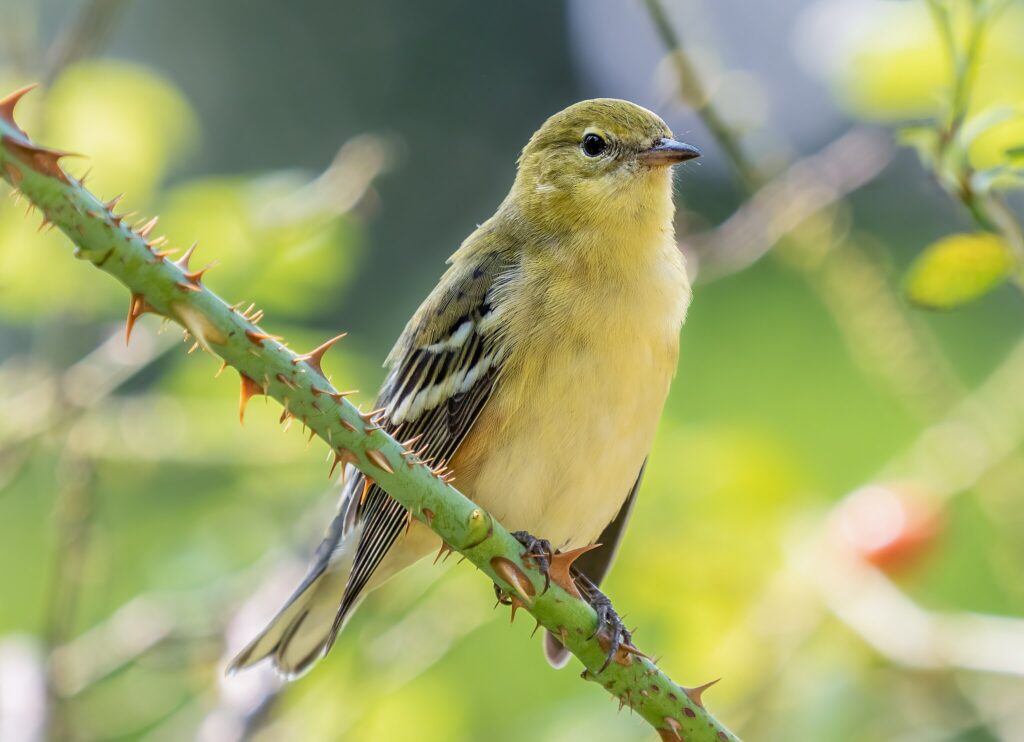Artificial Intelligence and Animal Group Behavior
By linking cognitive strategy, neural mechanisms, movement statistics, and artificial intelligence (AI) a team of interdisciplinary researchers are trying to better understand animal group behavior.
Published December 23, 2024
By Nick Fetty

A new research paper in the journal Scientific Reports explores ways that artificial intelligence (AI) can analyze and perhaps even predict animal behavior.
The paper, titled “Linking cognitive strategy, neural mechanism, and movement statistics in group foraging behaviors,” was authored by Rafal Urbaniak and Emily Mackevicius, both from the Basis Research Institute, and Marjorie Xie, a member of the first cohort for The New York Academy of Sciences’ AI and Society Fellowship Program.
For this project, the team developed a novel framework to analyze group foraging behavior in animals. The framework, which bridged insights from cognitive neuroscience, cognitive science, and statistics, was tested with both simulated data and real-world datasets, including observations of birds foraging in mixed-species flocks.
“By translating between cognitive, neural, and statistical perspectives, the study aims to understand how animals make foraging decisions in social contexts, integrating internal preferences, social cues, and environmental factors,” says Mackevicius.
An Interdisciplinary Approach
Each of the paper’s three co-authors brought their own expertise to the project. Mackevicius, a co-founder and director of Basis Research Institute, holds a PhD in neuroscience from MIT where her dissertation examined how birds learn to sing. She advised this project, collected the data on the groups of birds, and assisted with analytical work. Her contributions built upon her postdoctoral work studying memory-expert birds in the Aronov lab at Columbia University’s Center for Theoretical Neuroscience.
Xie, who holds a PhD in neurobiology and behavior from Columbia University, brought her expertise in computational modeling, neuroscience, and animal behavior. Building on a neurobiological model of memory and planning in the avian brain, Xie worked along Mackevicius to design a cognitive model that would simulate communication strategies in birds.
“The cognitive model describes where a given bird chooses to move based on what features they value in their environment within a certain sight radius,” says Xie, who interned at Basis during her PhD studies. “To what extent does the bird value food versus being in close proximity to other birds versus information communicated by other birds?”
Bayesian Methods and Causal Probabilistic Programming
Urbaniak brought in his expertise in Bayesian methods and causal probabilistic programming. For the paper, he built all the statistical models and applied statistical inference tools to perform model identification.
“On the modeling side, the most exciting challenge for me was turning vague, qualitative theories about animal movement and motivations into precise, quantitative models. These models needed to capture a range of possible mechanisms, including inter-animal communication, in a way that would allow us to use relatively simple animal movement data with Bayesian inference to cast light on them,” says Urbaniak, who holds a PhD in logic and philosophy of mathematics from the University of Calgary, Canada and held previous positions at Trinity College Dublin, Ireland, and the University of Bristol, U.K.
For this project, the researchers set up video cameras in Central Park to analyze bird movements, which they then used to study behavior. In the paper, the researchers pointed out that birds are an appealing subject to study animal cognition within collaborative groups.
“Birds are highly intelligent and communicative, often operate in multi-agent or even multi-species groups, and occupy an impressively diverse range of ecosystems across the globe,” the researchers wrote in the paper’s introduction.
The paper built upon previous work within this realm, with the researchers writing that “[this work demonstrated] how abstract cognitive descriptions of multi-agent foraging behavior can be mapped to a biologically plausible neural network implementation and to a statistical model.”
Expanding their Research
For both Mackevicius and Xie, this project enabled them to expand their research from studying individual birds to groups of birds. They saw this as an opportunity to “scale up” their previous work to better understand how cognition differs within a group context. Since the paper was published in September, Mackevicius has applied a similar methodology to study NYC’s infamous rats, and she sees potential for extending this work even further.
“This research has broad implications not just for neuroscience and animal cognition but also for fields like artificial intelligence, where multi-agent decision-making is a central challenge,” Mackevicius wrote for the Springer Nature blog. “The ability to infer cognitive strategies from observed behavior, particularly in group contexts, is a crucial step toward designing more sophisticated AI systems.”
Xie says she “learned many skills on the spot” throughout the project, including reinforcement learning (an AI framework) and statistical inference. For her, it was especially rewarding to observe how all these small pieces shaped the bigger picture.
“This work inspires me to think about how we apply these tools to reason about human behavior in group settings such as team sports, crowds in public spaces, and traffic in urban environments,” says Xie. “In crowds, humans may set aside their individual agency and operate on heuristics such as following the flow of the crowd or moving towards unoccupied space. The balance between pursuing individual needs and cooperating with others is a fascinating phenomenon we have yet to understand.”
The AI and Society Fellowship is a collaboration with Arizona State University’s School for the Future of Innovation in Society. For more info, click here.
Basis AI is currently seeking Research Interns for 2025. For more info, click here.
